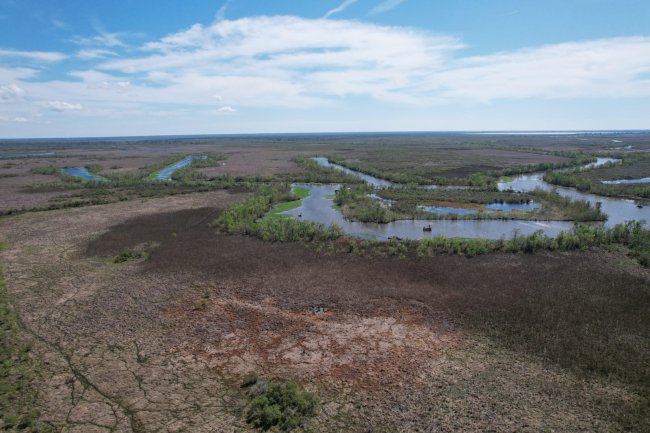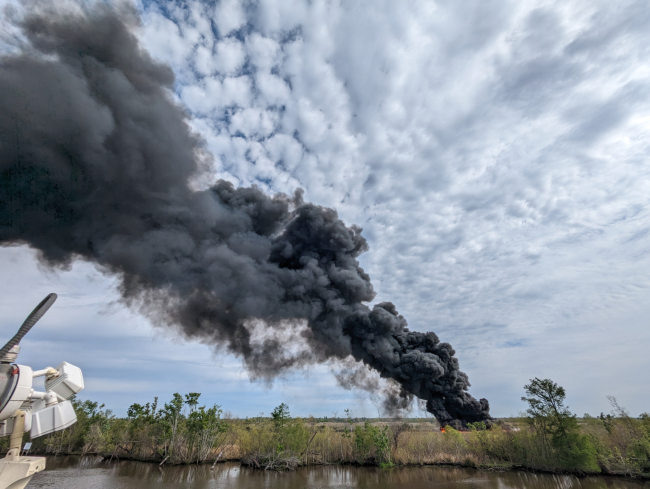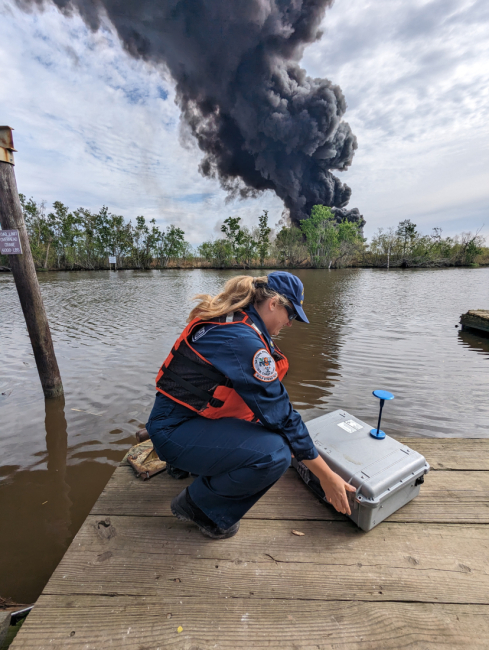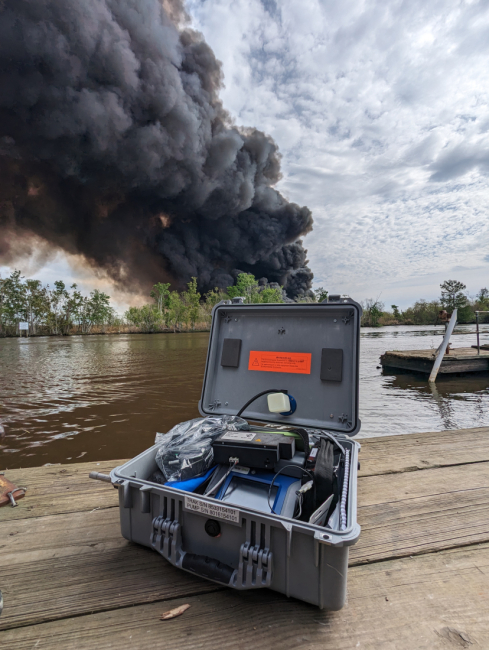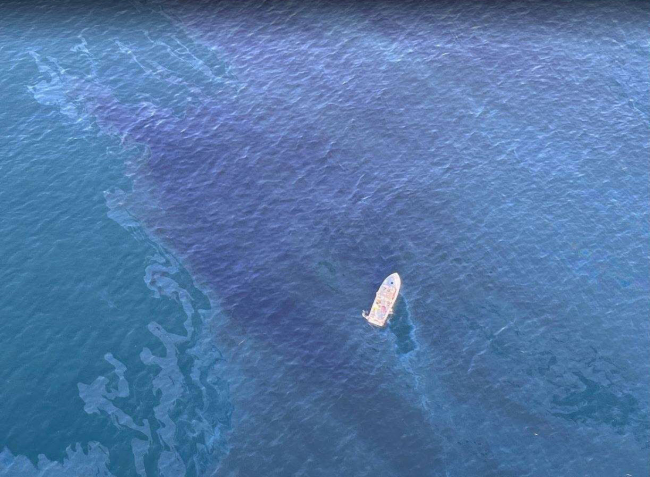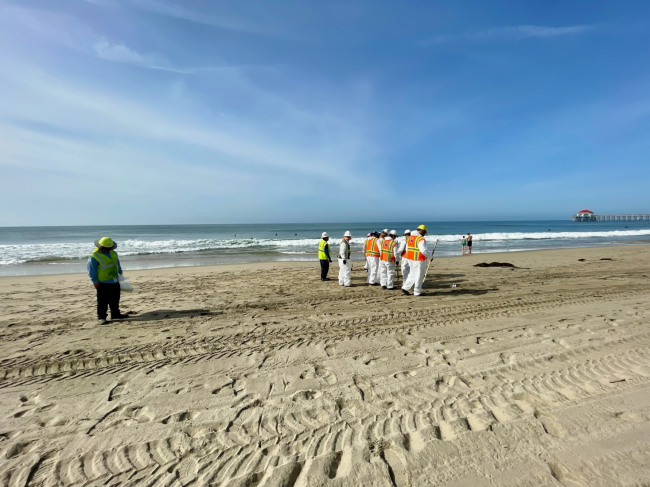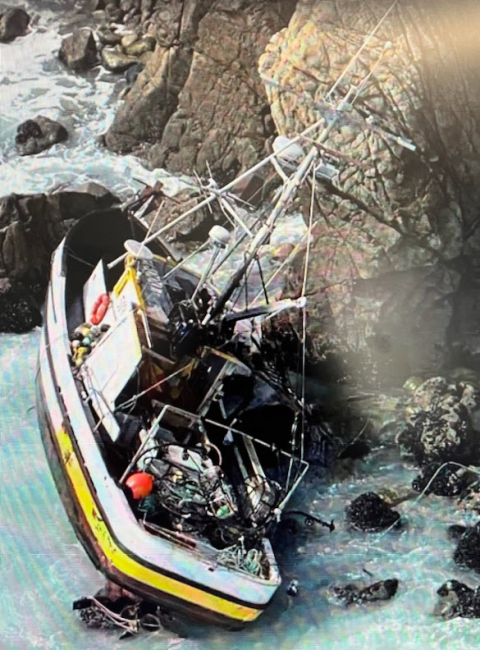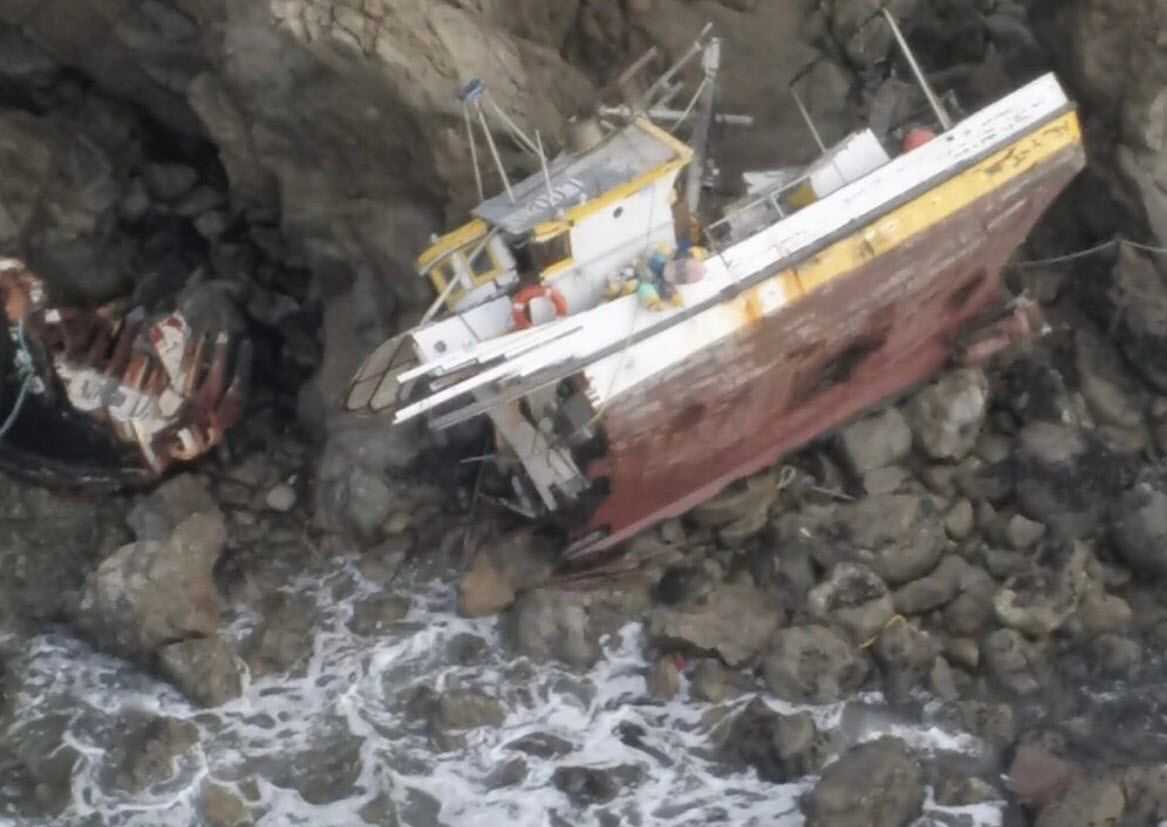Every month, NOAA’s Office of Response and Restoration’s (OR&R) Emergency Response Division provides scientific expertise and services to the U.S. Coast Guard (USCG), ranging from producing oil spill trajectories that estimate where a spill may spread; to identifying possible effects on wildlife and fisheries; to estimating how long oil may stay in the environment. We also receive requests to track and model other floating objects, such as log booms or shipping containers that have broken free, whale carcasses, fish die-offs, and algal blooms.
During March, OR&R provided response support for 26 incidents, including 19 new incidents in twelve states. The 19 new incidents included twelve actual or potential oil spills, two chemical incidents, and five other incidents, including two involving dead whales.
OR&R staff prepared 213 incident reports and documents, including eight fate and trajectory analyses. Cumulatively, these incidents posed an approximate risk of more than 1.5 million gallons of oil, and 1,500 tons of chemicals in the form of liquid nitrogen fertilizer.
(Note: All spill volumes are approximate and based on initial information that may be updated after further investigation.)
In Situ Burn of Oil Spill at Whitney Oil & Gas, Lake Hatch B-42; Houma, LA
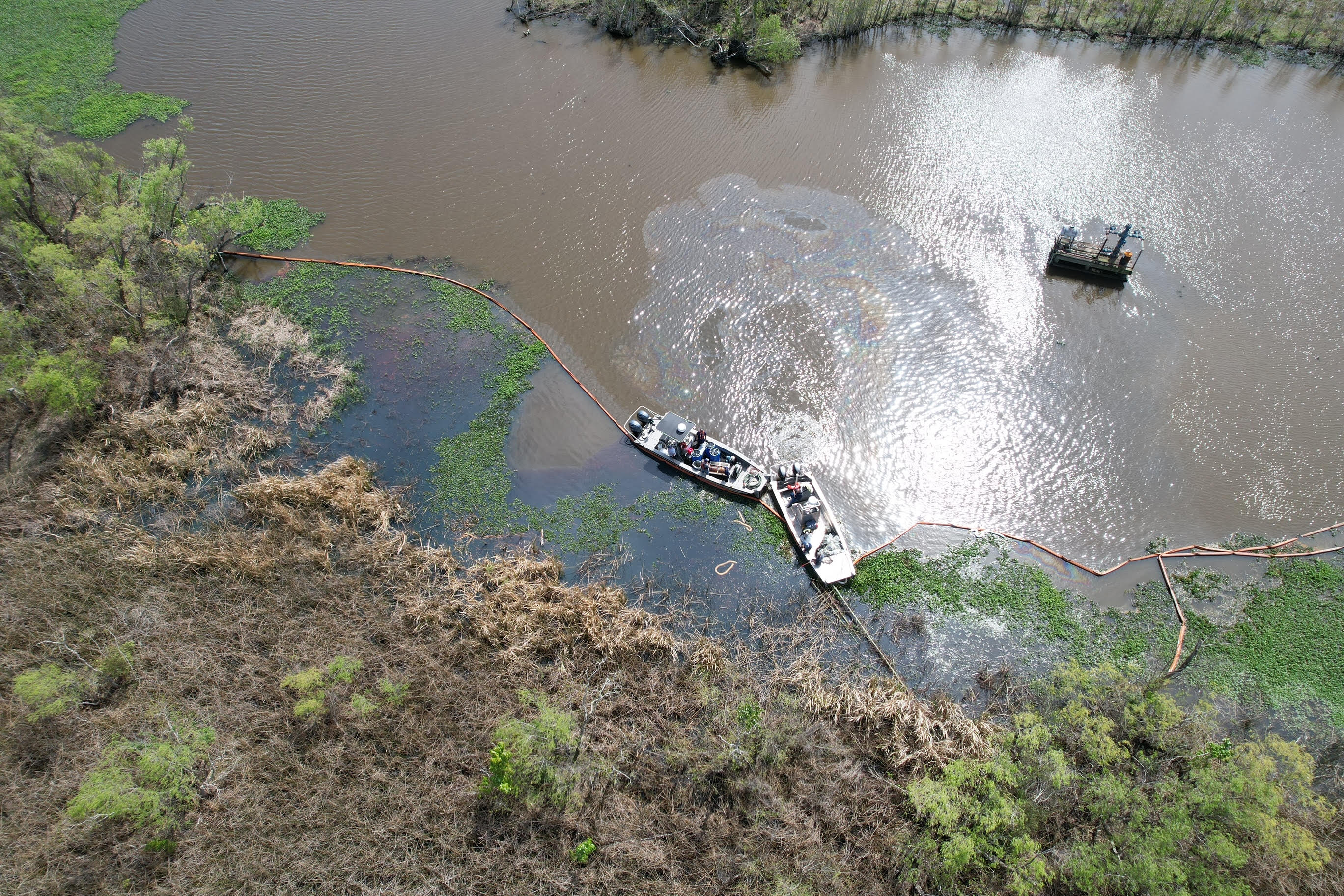
On March 6, a sheen was discovered near a well operated by Whitney Oil & Gas LLC in Houma, Louisiana. A leak in a three-inch test line was identified that released an estimated 40-60 barrels of crude oil, contaminating the surrounding marsh flotant. Flotant consists of tightly entangled plants and their roots, mixed with peat, paspalum, and wax myrtle, all floating as a buoyant mat.
The incident location was assessed by the Louisiana Department of Environmental Quality, Louisiana Oil Spill Coordinator's Office, and USCG representatives. All parties agreed that an in situ burn, or a controlled burning of spilled oil at the spill’s location, would be the best course of action for the incident location. Case studies have proven in situ burning to be less damaging and more effective than the use of intrusive mechanical methods in prairie land/marsh type areas. In comparison, manual recovery by response personnel accessing an environmentally sensitive area can cause adverse impact to the natural sedimentation and vegetative root structures. In addition, Whitney Oil & Gas, LLC requested the USCG Federal On-Scene Coordinator (FOSC) consider in situ burn approval as a tactic to mitigate this oil discharge. The Department of Commerce, Department of the Interior, Environmental Protection Agency, and States all provided concurrence on the use of in situ burning and the potential use of accelerant.
On March 11, a successful in situ burn was conducted, removing approximately 80% or more of the oil from the marsh. Burns such as these are particularly effective at removing oil from sediment and water where impacts from standard cleanup can be much greater and longer lasting. The short-lived burn allows natural recovery to begin much sooner when compared to traditional cleanup techniques that are much more impactful and have a greater potential for collateral damage. OR&R provided support through Scientific Support Coordinator guidance, and assisted with trade-off analysis and the decision to burn.
OR&R staff were on-scene during the burn, using the cooperatively designed in situ burning monitoring program known as SMART (Special Monitoring of Applied Response Technologies).
Sheen Report; off Huntington Beach, CA
On the morning of March 8, the USCG contacted the NOAA Scientific Support Coordinator for California to request support for a 2.5 mile by 1.5 mile sheen of unknown substance offshore of Huntington Beach in Orange County. The sheen was observed near oil platforms Emmy and Eva, about two miles from the Bolsa Chica wetlands. A USCG helicopter overflight provided initial photos and observations, while vessel-based responders collected on-water oil samples.
At the request of USCG, NOAA provided trajectory support to identify potential impacts to local natural resources at risk. A NOAA satellite imagery report indicated “possible oil”.
Samples obtained of the pollutant were reported as a sticky, black, tar-like substance. The USCG’s Incident Management Division worked with California’s Office of Spill Prevention & Response to have samples processed at state labs to identify the substance and its possible source.
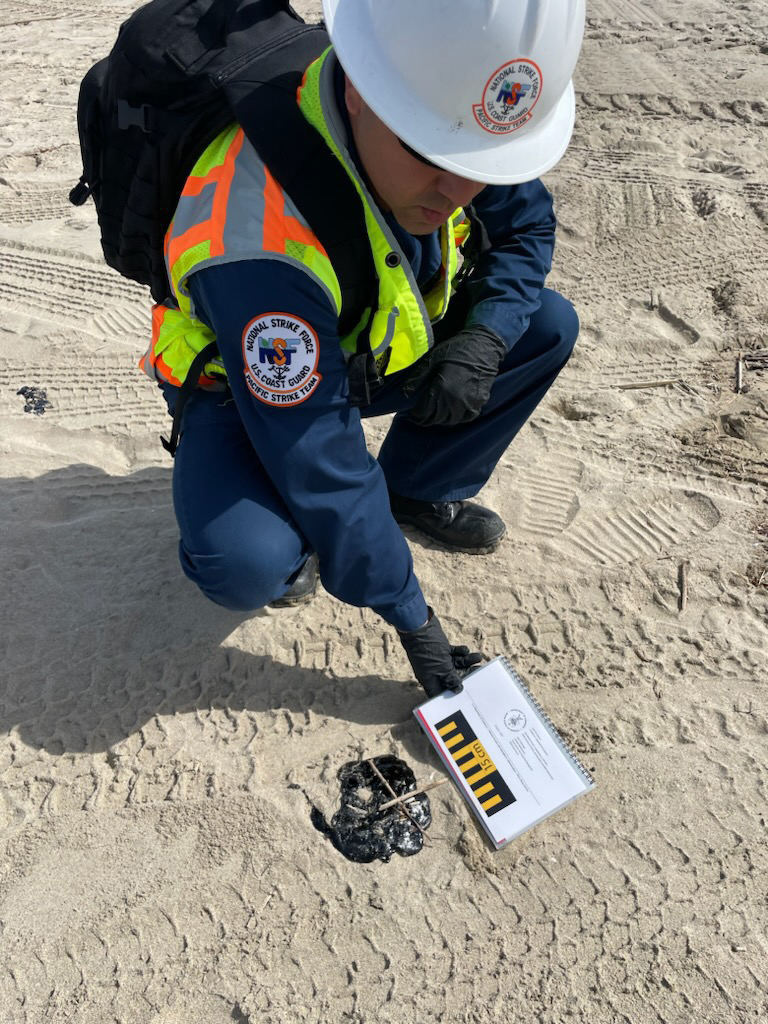
Out of an abundance of caution, crews deployed protection strategies at Bolsa Chica Lagoon, Talbert Marsh, and the Santa Ana River. By the evening of March 8, an estimated 85 gallons of product was recovered before the deteriorating sea state caused operations to pause.
Tar balls have been observed along the shoreline in Huntington Beach, with onshore recovery teams assessing the shoreline and removing tar balls, as needed. No beach or fisheries closures have been issued; however, the California Environmental Protection Agency advised against fishing in areas where there was visible sheen on the water.
The Oiled Wildlife Care Network (OWCN) was activated and crews surveyed the shoreline and responded to reports of oiled wildlife. As of March 15, the OWCN had captured nine oiled cormorants, one loon and one grebe. The source of the sheen remains unknown; the sheen matched the product that impacted the birds in care.
On March 10, with no additional actionable oil in the surf, oil removal complete, removal of protective booming strategies completed, and the incident no longer presenting an imminent and substantial pollution threat, the response was demobilized. At this time, the responsible party or source has yet to be identified.
Fire aboard the M/V Cuyahoga; Port of Ashtabula, OH
On March 15, the NOAA Scientific Support Coordinator for the Great Lakes was notified by the USCG of a fire aboard the M/V Cuyahoga in the Port of Ashtabula, Ohio on Lake Erie. The vessel, docked for the winter at the time, was a Canadian-flagged 664-foot bulk freighter and one of the oldest lake freighters in operation. Cargo carried on the Cuyahoga includes stone, iron ore, coal and other bulk commodities; however, it had no cargo on board at the time of the fire.
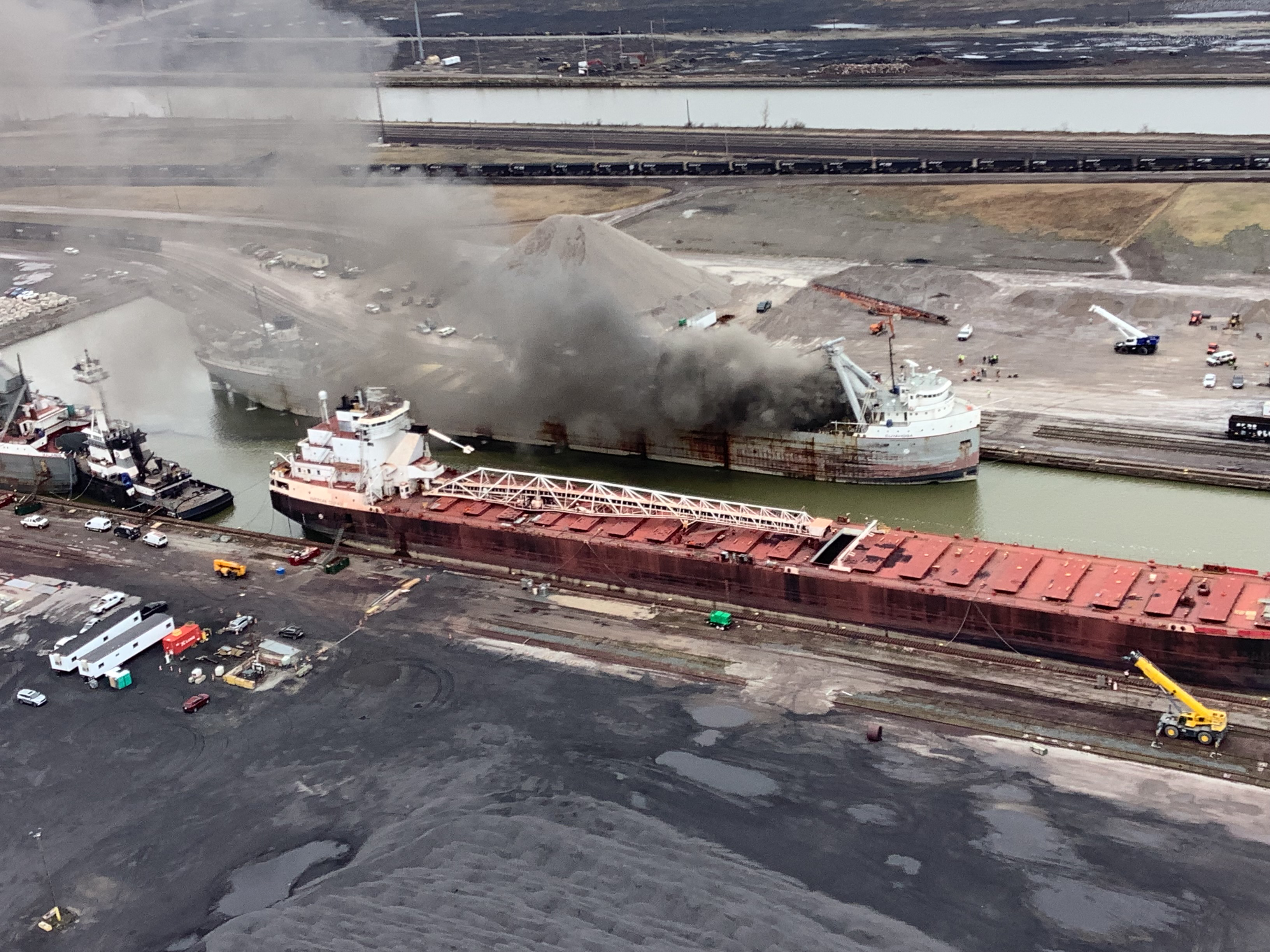
A safety zone was established and floating boom was deployed around the vessel. Ashtabula Fire Department, the On-Scene Coordinator, combatted and extinguished the fire, which was believed to have started in a cargo hold, then spread to the main deck. There were no reports of hull failure or observed pollution, as well as no stability issues caused by the weight of the water used to combat the fire.
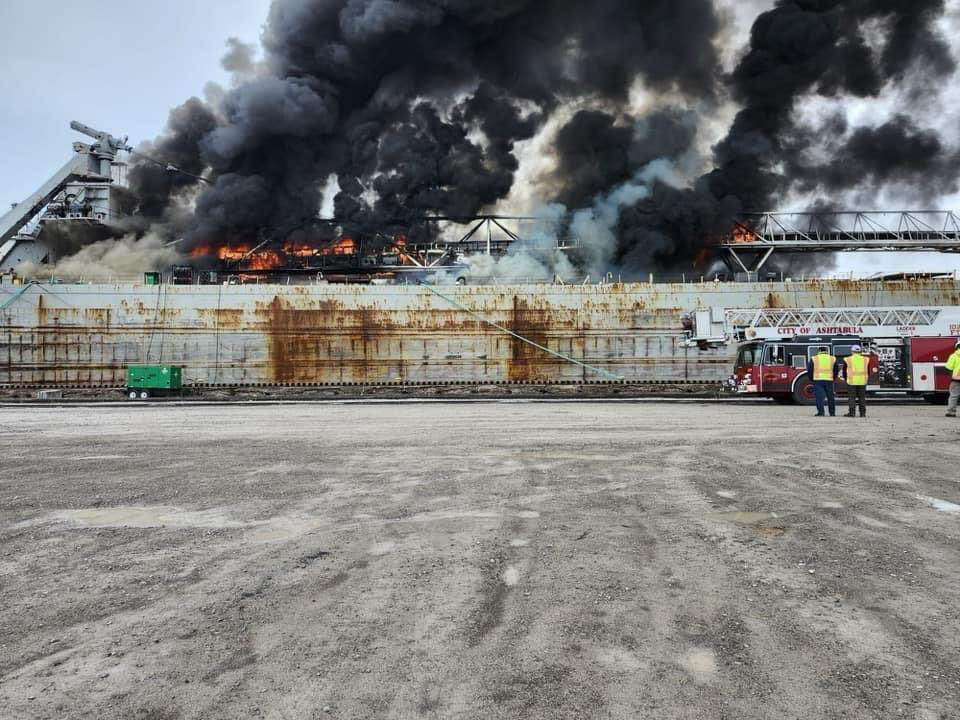
To combat the fire, firefighters mixed the F-500 Encapsulator Agent into the firefighting water as it was directed into the cargo holds. This agent is biodegradable and does not contain PFAS; however, it is classified as harmful to aquatic life. There was no concern that any F-500 entered the water due to the firefighters applying the agent directly into the holds from aboard the vessel. Firefighting water remaining aboard is scheduled to be transferred to a shore facility.
Francis Scott Key Bridge Major Marine Casualty; Baltimore, MD

On Tuesday, March 26, the cargo ship Dali allided with the Francis Scott Key Bridge in Baltimore, Maryland, resulting in the bridge’s collapse and tragic loss of life. The tragedy resulted in the loss of six lives and the immediate closure of the shipping channel leading into and out of the Port of Baltimore. Reopening the Patapsco River channel is critical to the U.S. economy, with the closure having lasting impacts on U.S. trade routes.
In the aftermath of the collapse on the Patapsco River, NOAA, alongside local, state and federal agencies, has been working around-the-clock to come to Baltimore’s aid.
Immediately following the collapse of the bridge, the Office of Response and Restoration’s Disaster Preparedness Program activated the National Ocean Service’s Incident Management Team to collect information and enhance coordination and response efforts, directly supporting the federal response. Additionally, the regional NOAA Scientific Support Coordinator was notified and responded on-scene in support of the U.S. Coast Guard and is present in command supporting ongoing operations.
NOAA is now knee-deep into the disaster response and recovery phase. An overview of the National Ocean Service’s activities in support of Francis Scott Key Bridge response and recovery efforts are detailed on its website, with additional updates expected in our upcoming incident responses for April to be published on the OR&R blog.
Grounded F/V Westerly; Point Reyes, CA
On March 28, the USCG notified the California Scientific Support Coordinator of a potential pollution case involving the 39-foot, wooden hulled fishing vessel Westerly, which had grounded on Point Reyes near Drakes Bay in Marin County, California. At the time of the call, the pollution potential was not known. Search and rescue operations were underway, resulting in the Marin County Sheriff’s Office recovering a deceased individual from the vessel.
A Unified Command—comprised of representatives from the USCG, NOAA, National Park Service-Point Reyes National Seashore, California Department of Fish and Wildlife’s Office of Spill Prevention and Response, and Marin County Office of Emergency Management—was established to respond to the incident and assess the status of the vessel and potential pollution onboard.
The terrain, rocky shoreline, and surf conditions severely restricted access to the site by both land and water. Assessments depended on safe weather and tidal conditions. With high concern for the vessel breaking up before pollution could be mitigated, NOAA provided oil fate and transport information at the request of the USCG to inform potential risks and timing to local sensitive areas.
A drone overflight equipped with infrared technology revealed that the vessel had sustained significant damage. The vessel was reported to have a maximum fuel capacity of 400 gallons, but intelligence collected by responding agencies suggested the volume was likely minimal at the time of the grounding. No sheen was observed and there were no reports of oiled wildlife.
Conditions required crews to access the vessel by helicopter to pursue any further operations. Helicopter-supported operations pose a high risk to worker safety and also have potential to significantly disrupt sensitive nesting birds in the area. Given these factors, the unlikelihood that any recoverable fuel remained onboard, and further “risk vs. gain” analysis, the Unified Command suspended its pollution removal planning. Within the next few days, the vessel had broken apart—still with no sheen observed—resulting in the USCG closing their case.
Here is the complete list of March’s incidents. Click on the links to find out more:
- Diesel Spill on Ice at Nanushuk Operations Pad; North Slope, AK
- Request for Whale Carcass Drift Analysis off the North Carolina Coast
- In Situ Burn of Oil Spill at Whitney Oil & Gas, Lake Hatch B-42; Houma, LA
- Sheen Report; off Huntington Beach, CA
- Liquid Nitrogen Release; Red Oak, IA
- Pipeline Spill of Bilge Slops; Naval Base Bangor, WA
- Midsteam Pipeline Mississippi River Spill; Buras-Triumph, LA
- Fire aboard the M/V Cuyahoga; Port of Ashtabula, OH
- Diesel Spill from U.S. Coast Guard Cutter Alder; WNW of Fort Bragg, CA
- Mystery Oil Spill; Breton Sound, LA
- NOAA Ship Thomas Jefferson; Norfolk, VA
- Horsepen Bayou Crude Oil and Produced Water Discharge; Houston, TX
- Francis Scott Key Bridge Major Marine Casualty; Baltimore, MD
- Pierside Grounding of M/V Burns Harbour; Superior, WI
- Pierside Grounding of M/V American Courage, Lake Shore Blvd, Marquette, MI
- Release from Old Landfill on JBER Property; Anchorage, AK
- Grounded F/V Westerly; Point Reyes, CA
- M/V American Mariner Aid-to-Navigation Allision; Raber, MI
- Right Whale Carcass off Virginia Coast

